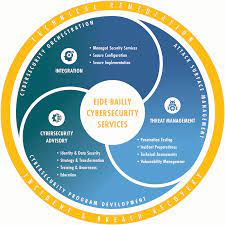Coding with C: Unleashing the Power of a Timeless Language
The Power of C Programming Language
C is a versatile and powerful programming language that has stood the test of time. Developed in the early 1970s, C has become one of the most widely used languages in the world, influencing many other programming languages that came after it.
One of the key strengths of C is its efficiency. C allows for low-level manipulation of computer hardware and memory, making it ideal for developing system software, such as operating systems and device drivers. Its speed and ability to directly access memory make it a popular choice for performance-critical applications.
Another advantage of C is its portability. C code can be easily adapted to different platforms with minimal changes, making it a great choice for cross-platform development. Many modern operating systems, like Windows and Linux, are written in C or have parts written in C.
C is also known for its flexibility and scalability. It provides a solid foundation for building complex software systems while allowing programmers to control hardware resources efficiently. Its syntax is clear and concise, making it easy to read and maintain code over time.
Despite being a powerful language, mastering C can be challenging due to its low-level nature and manual memory management. However, the skills acquired from learning C are invaluable and provide a strong foundation for understanding other programming languages.
In conclusion, C remains a fundamental language in the world of programming due to its efficiency, portability, flexibility, and scalability. Whether you are developing embedded systems, operating systems, or high-performance applications, mastering C can open up a world of possibilities in the field of software development.
6 Frequently Asked Questions About the C Programming Language
- What is C programming language?
- What are the key features of C?
- How is C different from other programming languages?
- What are the advantages of using C?
- Is learning C difficult for beginners?
- What are some common applications of C?
What is C programming language?
The C programming language is a powerful and versatile programming language that has been widely used since its development in the early 1970s. Known for its efficiency, portability, and flexibility, C allows programmers to write code that can directly interact with hardware and memory, making it ideal for system software development. Its clear syntax and ability to scale to complex projects have made it a foundational language in the world of programming. Mastering C provides a strong foundation for understanding other languages and opens up opportunities in various fields of software development.
What are the key features of C?
C, a widely used programming language, boasts several key features that contribute to its enduring popularity. One prominent feature of C is its efficiency, allowing for low-level hardware manipulation and fast execution speed. Additionally, C’s portability enables code to be easily adapted across different platforms with minimal modifications. The language’s flexibility and scalability make it suitable for developing a wide range of software applications, from system software to high-performance applications. Despite its challenges, such as manual memory management, mastering C provides a solid foundation for understanding programming concepts and languages.
How is C different from other programming languages?
In the realm of programming languages, C stands out for its unique characteristics that set it apart from others. One key distinction lies in its efficiency and speed, allowing for direct manipulation of hardware resources and memory. Unlike higher-level languages, C provides programmers with greater control over system-level operations, making it well-suited for developing system software and performance-critical applications. Additionally, C’s portability and scalability make it a versatile choice for cross-platform development, enabling code to be easily adapted to various environments with minimal modifications. Its concise syntax and emphasis on manual memory management contribute to a deeper understanding of how computers operate at a fundamental level, making C a valuable language to learn for those seeking a solid foundation in programming.
What are the advantages of using C?
When considering the advantages of using C, several key points come to light. Firstly, C is known for its efficiency and speed, making it an ideal choice for developing performance-critical applications. Its ability to directly access memory and manipulate hardware at a low level allows for optimized code execution. Additionally, C offers portability across different platforms with minimal modifications, making it suitable for cross-platform development. The language’s flexibility and scalability enable developers to build complex software systems while maintaining control over hardware resources. Despite its challenges in manual memory management, mastering C provides a strong foundation for understanding other programming languages and opens up diverse opportunities in software development.
Is learning C difficult for beginners?
Learning C programming can be a challenging but rewarding experience for beginners. Due to its low-level nature and manual memory management, mastering C may require extra effort and attention to detail. However, the skills acquired from learning C are invaluable and provide a strong foundation for understanding other programming languages. With dedication and practice, beginners can overcome the initial learning curve of C and gain a deeper understanding of computer systems and software development principles.
What are some common applications of C?
C programming language is widely used across various industries and applications due to its efficiency and versatility. Some common applications of C include developing operating systems like Windows and Linux, creating system software such as device drivers, implementing embedded systems for electronics and IoT devices, building high-performance applications like databases and web servers, designing game engines for video games, and writing compilers and interpreters for other programming languages. The speed, portability, and low-level control provided by C make it a popular choice for projects that require direct interaction with hardware or demand optimal performance.












